Ampex MX-10 Tube Mic Preamp Repair
December 2019
Here is some info on an Ampex MX-10 Tube Mic Preamp we worked on.
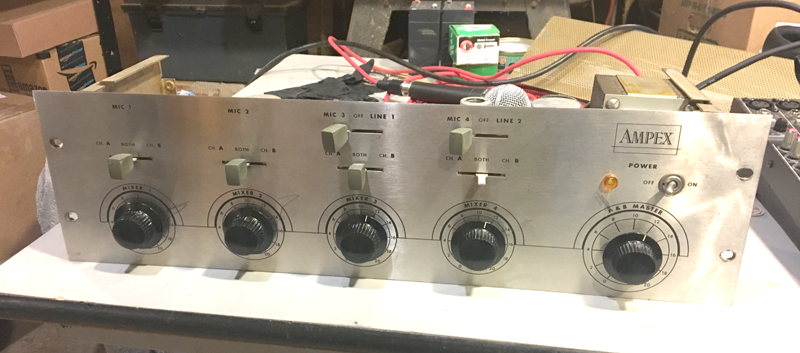
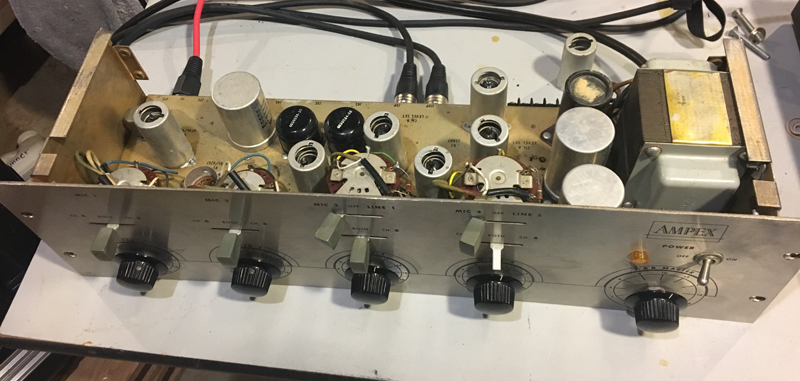
Ampex MX-10 Tube Mic Preamp
We were asked to try to repair one of these. It had bad distortion and a loud buzz on the A (left) channel, which showed up on all 4 mic inputs.
These are vintage tube mic preamps built in the early '60s by Ampex (we found a manual on-line that was dated 1962). They are tube driven, and have 4 mic preamps, two of which can be switched to handle a line input. Each mic preamp can be switched to A (left), B (right) or both (center) only - no pan control - and have a gain control. There is also a master gain control. We actually have an Ampex AM-10 mic preamp, which is very similar in layout and function, but is solid state. We will be cleaning that up and getting it working, hopefully, in the future.
To get a better idea of what was going on, we hooked this up to our signal generator (a Heathkit we built back in the '70s - had to calibrate it as we hadn't used it in a while, but it still actually works nicely) and oscilloscope. This clearly showed the severe distortion present at the output (this should be a clean sine wave, which it was on the B channel).
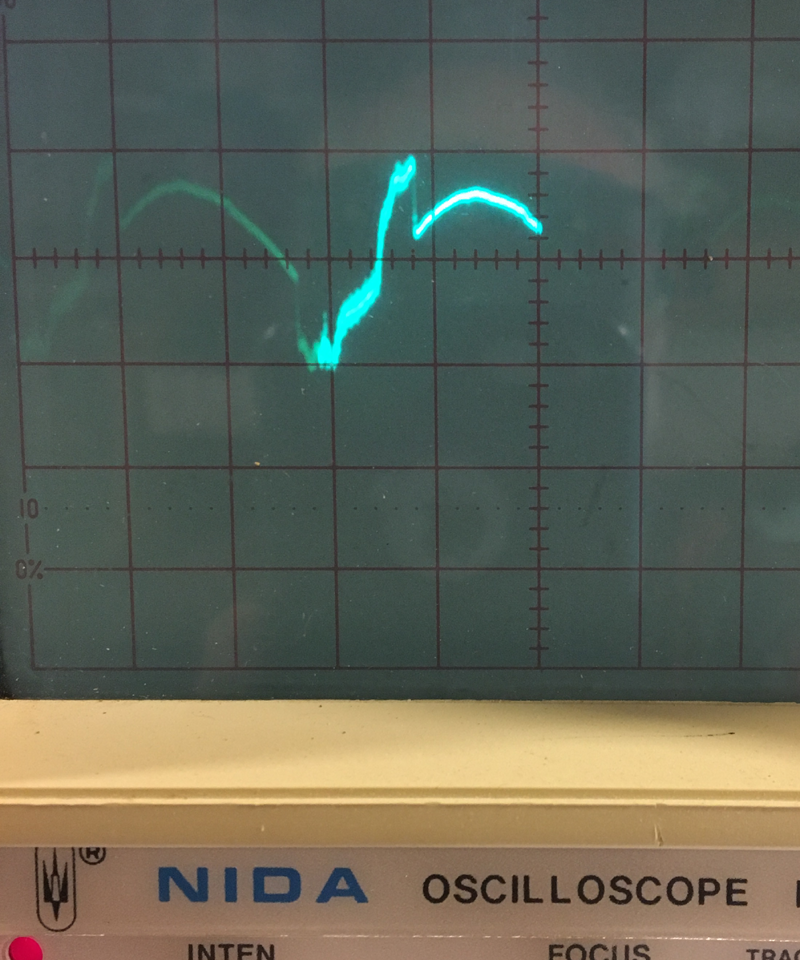
Distortion at output
We found a schematic for this on-line, and found that some of the voltages on the left channel driver tube, and left channel section of the output tube were way off. This unit is an old hand wired, point to point, device. This sometimes makes getting at some junction points tricky. We first had to remove an output jack that hovered right over the output tube socket in order to get at the tube socket terminals.
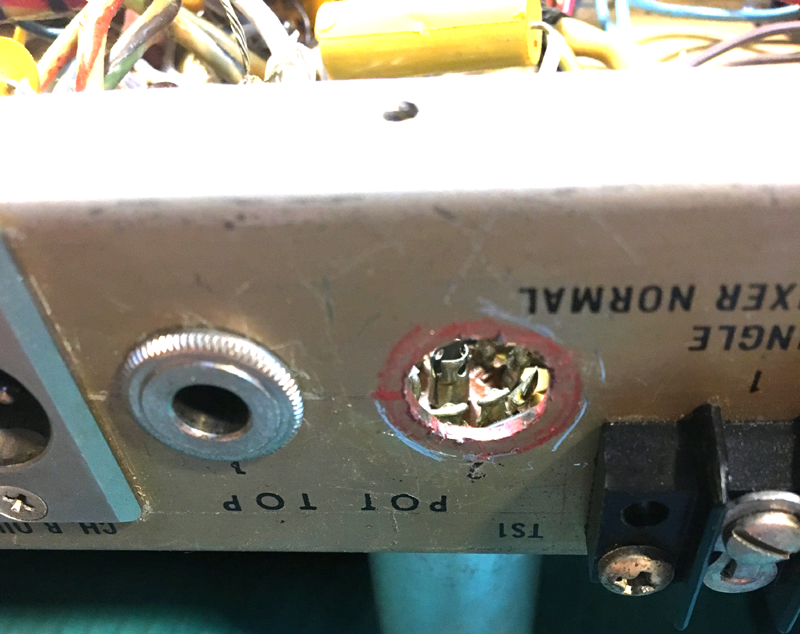
Output jack was blocking access to tube socket terminals
After some testing, we determined that two parts had actually failed around the output stage. A resister which connected the output of the driver tube to the input of the output tube had opened up, causing the voltage problems. Also, a capacitor that isolates the DC voltage at the output of the output tube from the output jack was leaking, allowing about 70 VDC to appear on the output jack (DC voltage at the output should be 0). The following picture illustrates how packed together parts can be in the older point-to-point devices.
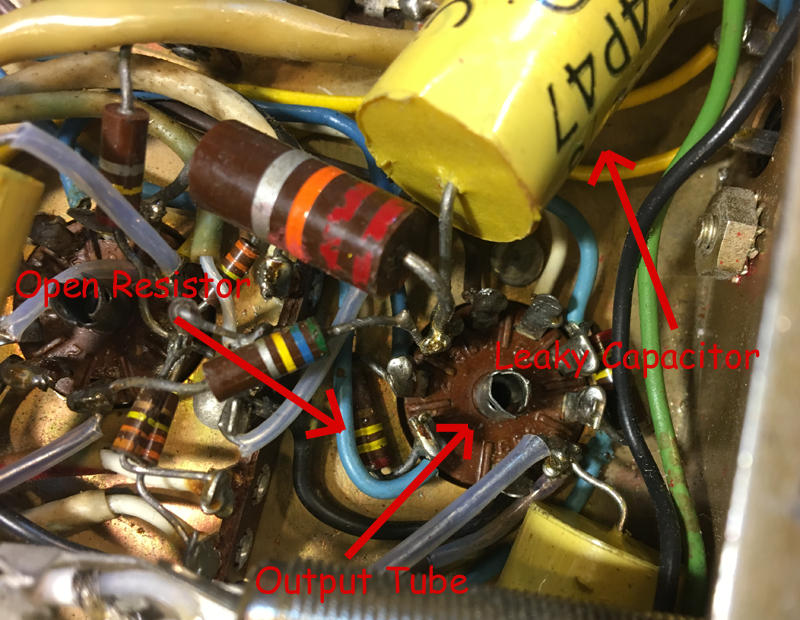
Failed parts at output tube stage
After replacing these two parts, the A channel was now functioning properly. One other issue was, one of the tubes had also failed (probably due to the odd voltages caused by the failed resistor). This was a 6267 preamp tube, which we were not familiar with (not one we have seen in typical tube guitar amps), but fortunately they are still being manufactured - we were able to get a JJ version to replace it, which completed the repair.
